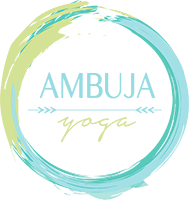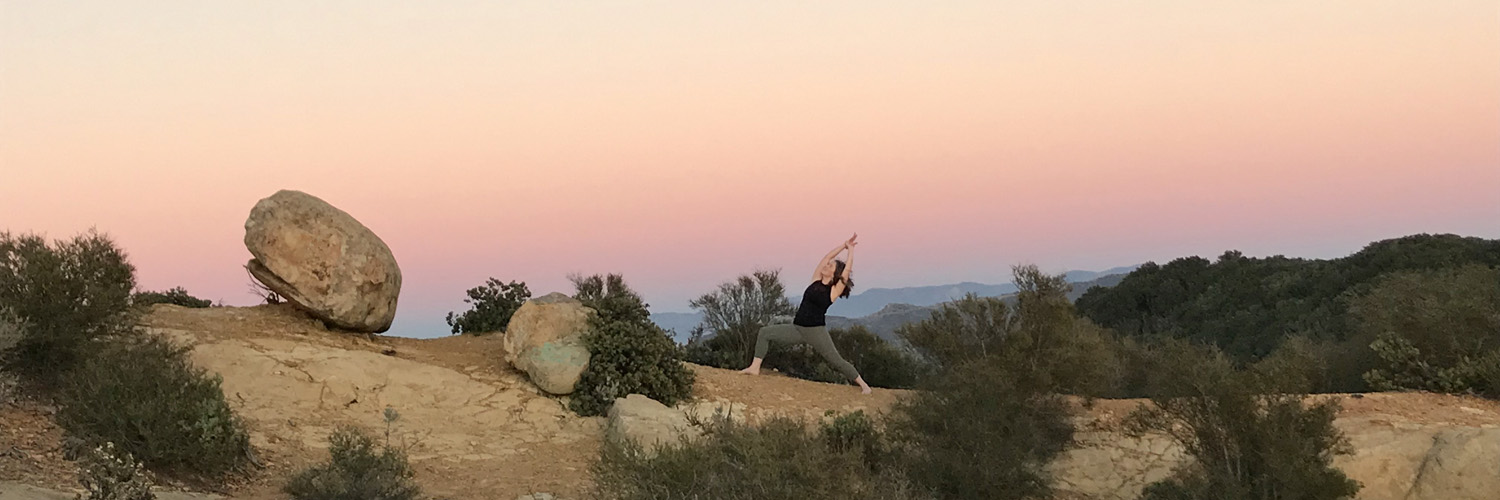What’s a Mudra?
Mudra is a term with many meanings. It is used to signify a hand gesture, a mystic position of the hands, a seal, or even a symbol. However, there are eye positions, body postures and breathing techniques that are also called mudras. These symbolic gestures are said to have some influence on your body’s energy or mood. For example, a person who consistently does the gesture of fearlessness, which can often be seen in the depiction of Indian deities, will lose their fearfulness over time. Gertrud Herschi, author of Mudras: Yoga in Your Hands, says, “Mudras engage certain areas of the brain and/or soul and exercise corresponding influence on them.” Essentially, mudras allow you to influence your body and mind by bending, crossing, extending or touching the fingers with other fingers.
In Hatha Yoga, there are 25 mudras. In addition to hand gestures, these also include eye and body positions and bandhas. In Kundalini yoga, the hand mudras are used during the body postures to intensify their effect.
The Origin of the Mudras
The specific origin of the mudras is a mystery. Mudras are found and used throughout the entire world. In India, mudras are an established component of all religious activities. Various mudras and arm poses are significant in the depiction of the Hindu gods. Mudras also represent distinguishing characteristics of the deities.
Mudras are also common in Indian dance. The hands, eyes and body movements act out the entire song without words, almost like a sign language.
Mudras are also practiced in Tantric rituals. They play a large role in Buddhism. In the pictorial depictions of Gautama Buddha, six mudras are present. These mudras are closely related to his teachings and his life.
How are Mudras Practiced?
Form your hands and place your fingers as they are shown in the various illustrations. The pressure of the fingers should be very light and your hands should be relaxed. Some mudras may be difficult to do at first because of the placement of the fingers. With practice, they’ll become easier. If you do the mudra as best as possible, you should still experience the effects.
Mudras can be done while seated, lying down, standing or walking. Be sure that your body position is symmetrical and centered and that you are as relaxed as possible. If you sit on a chair while doing them, your back should be straight and your feet should have good contact with the floor. You can also do them lying down on your back. It is important to remain comfortable and relaxed because any tension will hinder the inner flow of energy. If you do them while walking, make sure you move in an even, calm and rhythmic way. You can also do them standing or seated in meditation.
Meditation is the preferred way to use mudras because the effect is accelerated and intensifies. Observing the normal flow of the breath or influencing and directing the breath is a very important way of supporting the mudra. Visualizations and affirmations can also intensify the effect of the mudra.
You can practice mudras at any time and in any place. A good time to practice mudras is a few minutes before getting up and a few minutes before falling asleep, before or after meals, when you walk somewhere, while on public transportation or during breaks at work. Specifically, select one or two mudras to practice at a time.
There is some disagreement among researchers regarding the amount of time you should hold a mudra. Hirschi says, “Mudras that are used for acute complaints — such as respiratory and circulation problems, flatulence, exhaustion, or inner restlessness — should be discontinued when the appropriate effect is achieved. Other mudras can be practices for three to thirty minutes, two to four times a day.”
The effects of the mudra may occur immediately, over several days, weeks or even months. The person performing the mudra may start to feel warm while the sense of pain or unwellness fades away. Their mood might improve. But exactly the opposite might occur first. They might become tired, or start to feel cold and shiver. This is also a positive sign of the effects.
Breathing to Enhance Mudras
The effect of a mudra can be intensified with the breath. They can also be enhanced by affirmations and visualizations. Here are a few tips on how to use breath to enhance mudras:
- Exhale vigorously several times at the beginning of the mudra. This is said to make room for what you want to achieve.
- Always lengthen the pause after inhaling and after exhaling by several seconds. Hirschi says, “The inner powers are developed during the pauses – on every level.”
- When you practice a mudra to calm yourself slow your breathing.
- When you practice a mudra to refresh yourself intensify your breathing.
- Breath should be slow, deep, rhythmic and flowing
The Power of the Palm
Eastern sages and doctors say that the body, mind, and soul are inherent to every fingertip, finger joint, and each individual finger and even the entire hand.
In Gertrud’s mudra book she says, “There is a direct relationship between the hands and neck since the nerve paths run through the vertebral foramina in the arms, hands, and fingers. The flexibility of the hands always affects the flexibility of the neck. Moreover, spreading the ten fingers creates the thoracic vertebrae to spread out. This increases the tidal volume of the lungs. The hands and/or fingers no longer properly stretch their fingers. This shows tension in the heart area, which often indicates the prelude to heart disease or a tendency toward osteoporosis.”
Ilse Middendorf, a leading expert in the field of respiratory therapy, has proved that a direct relationship between the individual fingers and the corresponding areas of the lungs. The index fingers and thumbs influence breathing in the upper area of the lungs, the middle finger in the middle area and the little finger in the lower lung region.
Also, the nerve paths of the hands and feet occupy a large area in the brain. This area is much bigger than that of the arms and legs.
Ayurveda
Ayurveda practitioners believe that every illness is an imbalance in the human body and that healing can take place when the natural balance has been restored. They believe the universe is composed of Ether, Water, Fire, Earth, and Air. Therefore, human bodies are also composed of these five elements. Each finger represents an element. If there is too much or too little of one element, an imbalance occurs. The balance can be restored through mudras. The image below shows which element represents which finger.
Chakras
The most common classification of the chakras in the fingers is listed below:
Pinky finger = Sacral Chakra
Ring Finger = Root Chakra
Middle Finger = Throat Chakra
Index Finger = Heart Chakra
Thumb = Solar Plexus Chakra
Acupressure
Acupressure is a Chinese healing method used throughout the world. Instead of using needles, like acupuncture, meridians are stimulated with the fingers. In the image below you can see the corresponding points. You simply press the point lightly with the thumb for several minutes to achieve the desired effect.
Reflex Zones
The hand reflex zones correspond to the foot reflex zones. Both of the images below show the reflex points or surfaces that are connected with the muscles and organs.
There are also places on the palm that corresponds to the meridians, the energy paths that run through the body and control its individual functions like circulation, respiration, digestion, and individual organs. Additionally, astrology and palmistry aspects can be found in the hands.
Different Types of Mudras
There are many different types of mudras including mudras to heal physical and emotional problems, mudras for recharging energy reserves, improving relationships, coming to terms with the past, solving everyday problems, building character, planning the future or connecting with the divine among many others. You can even create your own mudra with proper knowledge and experience.
Here are three examples of mudras:
1. Ganesha Mudra (The elephant, Ganesha, the deity who overcomes all obstacles)
Hold your left hand in front of your chest with the palm facing outward. Bend the fingers. Now grasp the left hand with the right hand, which has its back facing outward. Move the hands to the level of the heart, right in front of the chest. While exhaling, vigorously pull the hands apart without releasing the grip. The will tense the muscles of the upper arms and chest area. While inhaling, let go of all the tension. Repeat six times and then lovingly place both hands on the sternum in this position. Focus on the feeling in this part of your body. Then change the hand position: your right palm now faces outward. Repeat the exercise six times in this position. Afterward, remain in silence for a while.
Ganesha is the remover of obstacles. If you would like to learn more about the Ganesha mudra, hop on over to this blog post I wrote from Bali here.
2. Pran Mudra (Life mudra)
With each hand: place the tips of the thumb, ring finger and little finger together. The other fingers remain extended.
The Pran Mudra activates the root chakra in which the elemental force of a human being is found.
The Pran Mudra generally increases vitality, reduces fatigue and nervousness, and improves vision. It is also used against eye diseases. On the mental-emotion level, it increases our staying power and assertiveness, healthy self-confidence, gives us the courage to start something new, and the strength to see things through.
3. Garuda Mudra (Garuda, mystical bird)
Clasp your thumbs and place your right hand on top of the left hand, on your lower abdomen. Remain in this position for about ten breaths and then slide your hands up to your navel. Stay here for another ten breaths. Then place your hands on the pit of your stomach and remain again for ten breaths. In conclusion, place your left hand on your sternum, turn your hands in the direction of your shoulders and spread your fingers.
This mudra activates blood flow and circulation, invigorates the organs, and balances energy on both sides of the body. Whether in the pelvic or chest area, it invigorates and stimulates. It relaxes and relieves pain related to menstrual complaints, stomach upsets, and respiratory difficulties. It also helps people deal with exhaustion and mood fluctuations.
We have loads of mudras on our blog. Which ones have you experimented with? Let us know in the comments.
Autumn, founder of Ambuja Yoga, often incorporates mudras into her yoga classes and retreats. If you would like to learn more, check out one her upcoming yoga retreats. Mudras are an integral part of the Ambuja Yoga teacher trainings. If you’re ready to take the leap, we’re here for you!
- What’s a Mudra? Discover The Power in Your Hands - February 20, 2019
- 5 Signs You Need a Yoga Retreat - August 1, 2016
*Some of the links above are affiliate links, meaning, at no additional cost to you, I earn a small commission if you click through and make a purchase. These earnings help make the maintenance of this blog possible. You can rest assured that I only link to products I know and love.

 Ambuja Yoga
Ambuja Yoga 






Pingback: Introduction to the Chakras | Ambuja Yoga
Pingback: Anahata Chakra: The Chakra of the Heart | Ambuja Yoga
Pingback: Pran Mudra for Vitality, Confidence and Courage | Ambuja Yoga
Pingback: Throat Chakra: Center of creative self-expression | Ambuja Yoga
Pingback: Four Mudras for Anxiety and Healing | Ambuja Yoga